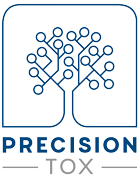by Jeanne Laperrouze
Media Part blog
22 april 2022
Worldwide, over 100 million animals such as rodents, monkeys, frogs, cats or dogs, are killed in animal experimentation. If animal testing and research have contributed to the advancement of science and medicine for centuries, several facts advocate for the development and adoption of faster and more ethical methods to reduce and replace the use of animals for scientific purposes.
Of course, there is the obvious concern for animal welfare. The reproducibility crisis is another argument questioning the relevance of animal testing: between 51% and 89% of animal studies are estimated not reproducible. Recently, researchers at Johns Hopkins University developed an artificial intelligence algorithm able to predict substance toxicity after comparison to databases and previously conducted animal testing. This project highlighted some inconsistencies, showing that different animals could generate different data for the same experiment.
It has also been observed that some animal testing is not reliable enough to predict the effects of drugs in human bodies. The difficulty to extrapolate data from animals to humans, due to interspecies differences, for the purpose of defining sound safety exposure level to harmful substances is a challenge scientists and risk assessors are also faced with. Coupled with the urgency to regulate the growing number of chemicals whose toxicity is still unknown, this stresses the need to quickly develop faster, more ethical and accurate solutions.
There is a wide array of techniques, software and tools available nowadays to replace non-human animal testing. Referred to as New Approached Methodologies (NAMs) or Novel Methods, there are very diverse and complex, and help fill the knowledge gaps that we would be left with the use of animal models only.
Among the most promising techniques , we can quote organ-on-chip and 3D cell culture (or organoid) grown in an artificially created environment. Organoids are primary used in pharmaceutical and toxicological studies to assess the effects of drugs or the potential adverse effect of chemicals. 3D cells cultures derived from tumor cells biopsied from human patients can be used to study drug resistance of tumors; they are also used in modeling neurodegenerative diseases such as Alzheimer’s and Parkinson’s; organogenesis is advancing so fast that researchers at Cincinnati Children hospital hope to be able to grow full organ for human transplantation within 10 years.
Artificial Intelligence and machine learning models are saving the lives of millions of animals and hold huge potential to generate reliable and safe outcomes for drug discoveries. In silico, aka computer-based modeling technologies, can speed the rate of drug development while reducing cost of procedures and clinical trials. These methods are used to for analysis, interpretation and visualization of data sets from various sources such as genome data. They have also been applied more recently to discover potential cure for COVID-19.
Another solution to replace animals testing relies on alternative organism species. The replacement of animal models with other animal models might look counter intuitive for ethical reasons, however certain non-vertebrates such as fruit fly or worm do not feel pain. Embryos of frog or zebrafish are also considered non-sentient. As such, these models are not seen nor counted as laboratory animals in EU law.
Though in appearance far more distant to humans than rodents, evolutionary biology and eco-toxicology have proven these models to be particularly relevant to study all animals, including humans as well as to assess environment health. Fruit fly shares 60% of genes with human through a common ancestor and 75% of the genes responsible for human diseases have homologs in flies. Easy to manipulate in the labs, fruit fly or zooplankton allow scientists to conduct high-throughput screening and generate more data, hence more accurate results.
Understanding what genes are affected by a chemical in these alternative models can help predict faster and with more accuracy how it will affect other species. This is the ambition of the PrecisionTox – a EU-funded project dedicated to develop NAMs to accelerate chemical safety assessment – that relies on the study of five alternative organism species and human cell lines combined with robust data analysis for comparative toxicology.
If NAMs already replace animal models in certain applications, like for cosmetics ingredients, they are currently complementing the data obtained through animal testing in many other fields. It must be emphasized that all models, whether based on traditional animal experiments or NAMs have their limitations. Organoids do not allow to study the entire organism, and growing organs in vitro requires the use of fetal bovine serum, therefore there are not fully animal-free. We can also question the ethics of using alternative animal species or embryos as well as their relevance in some situations, to replace rodents.
Therefore, animal testing and NAMs should not be opposed but seen as complementary. Training and incentives on Novel methods and responsible use of laboratory animals are constantly needed to tackle environment and health issues. This requires the involvement of all stakeholders, from animal welfare advocate to industry, researchers and policy makers, to improve quality of research and animal welfare.




